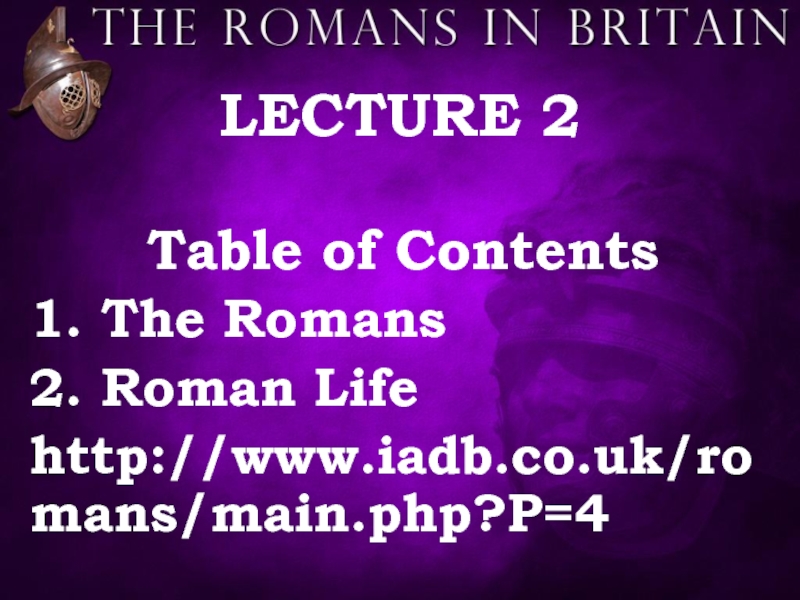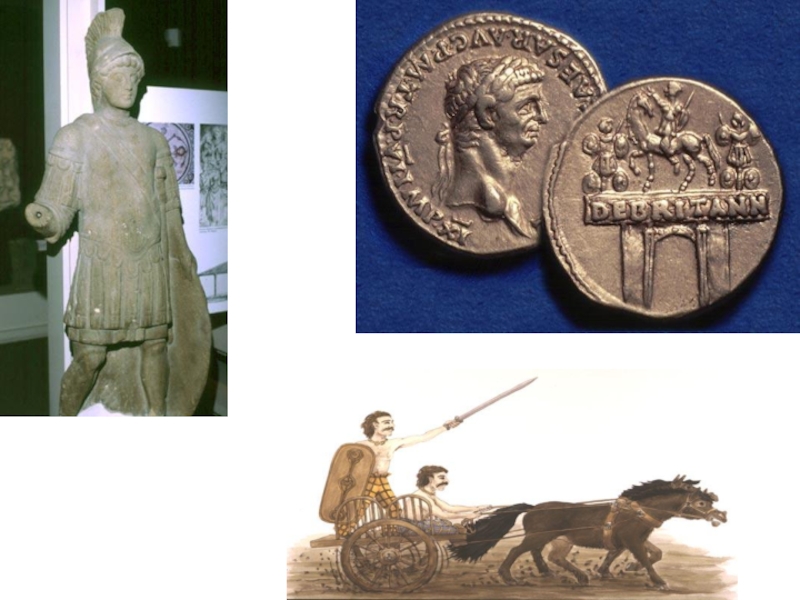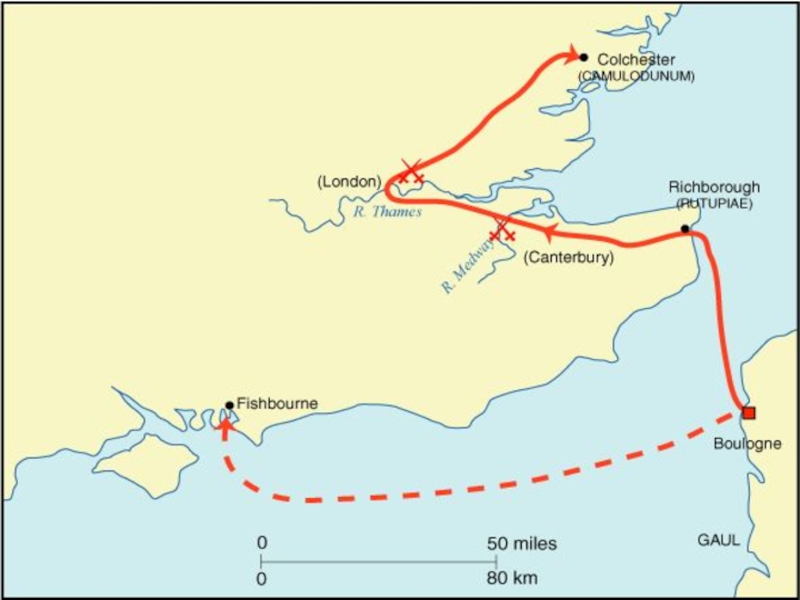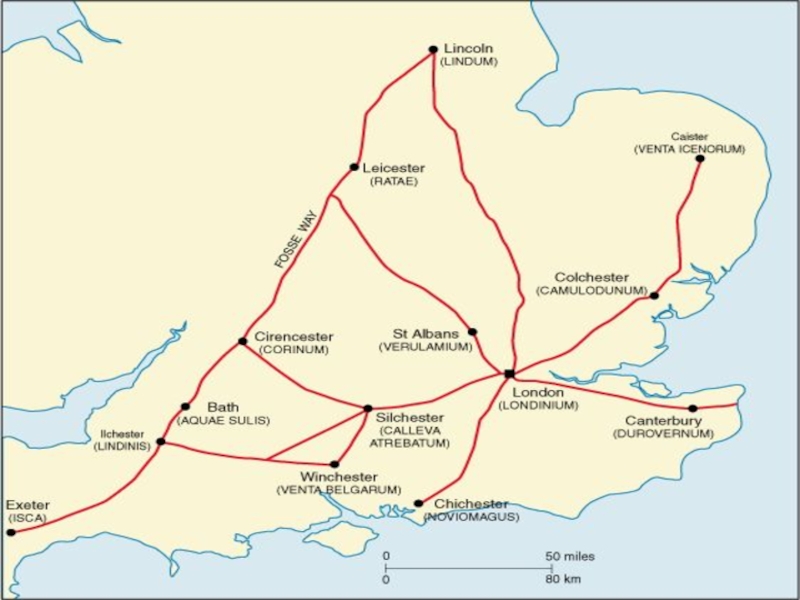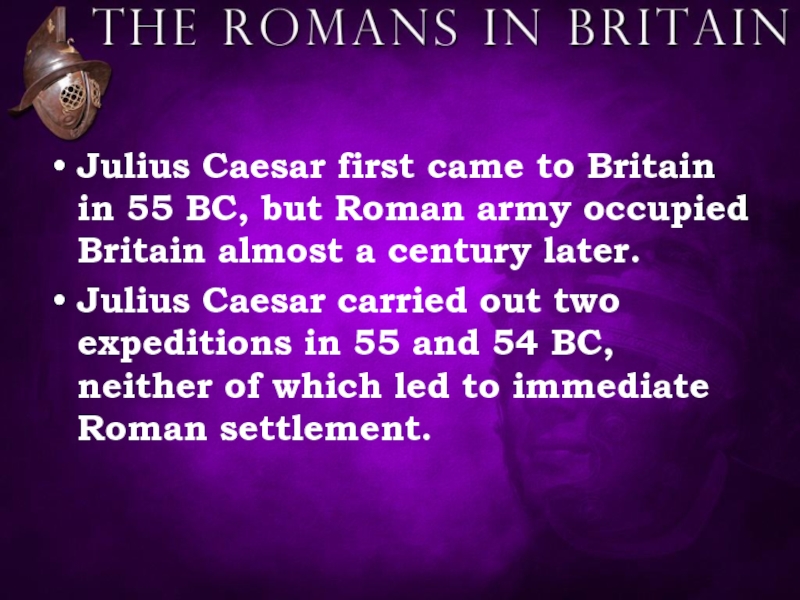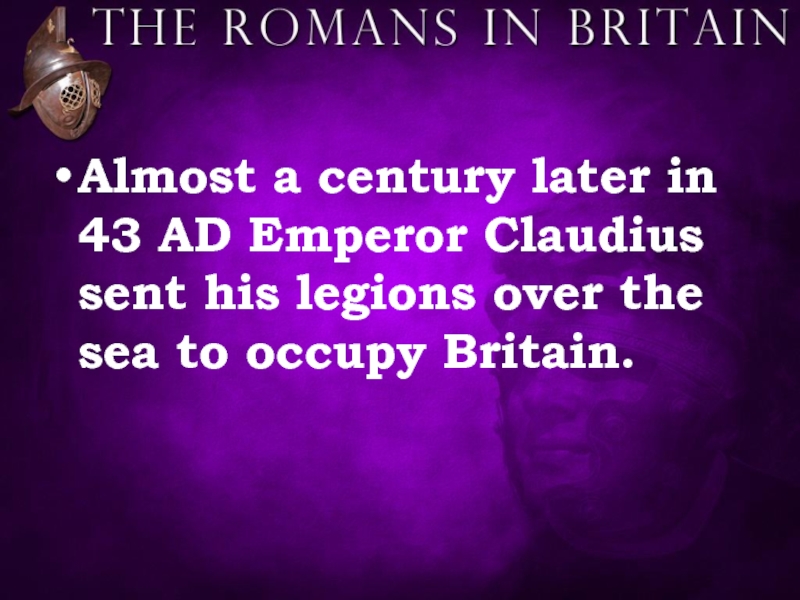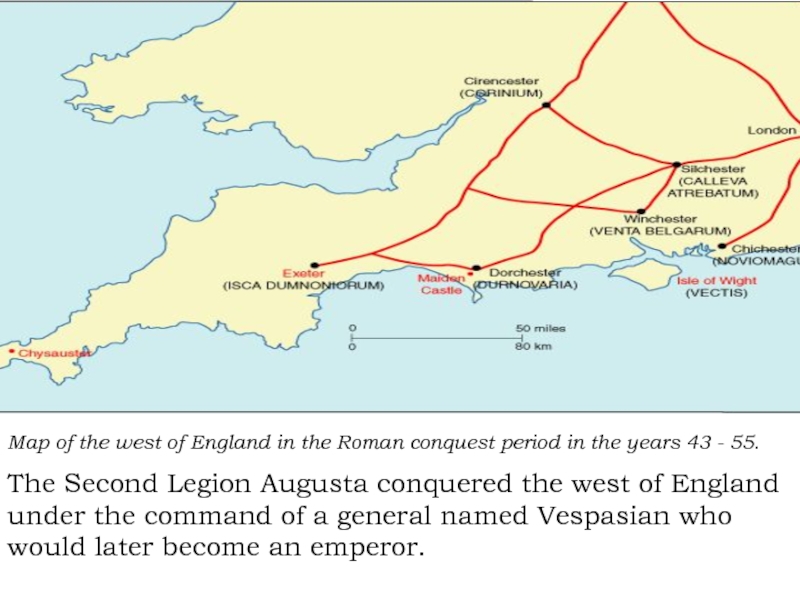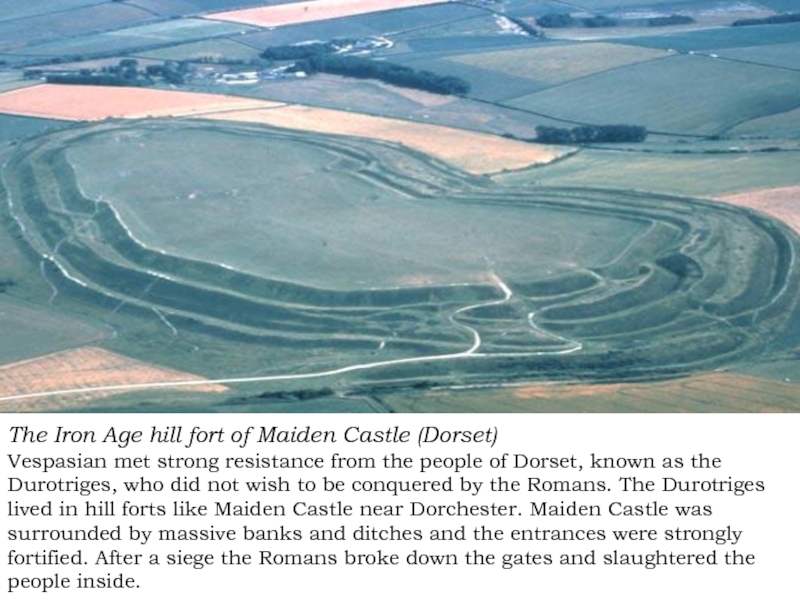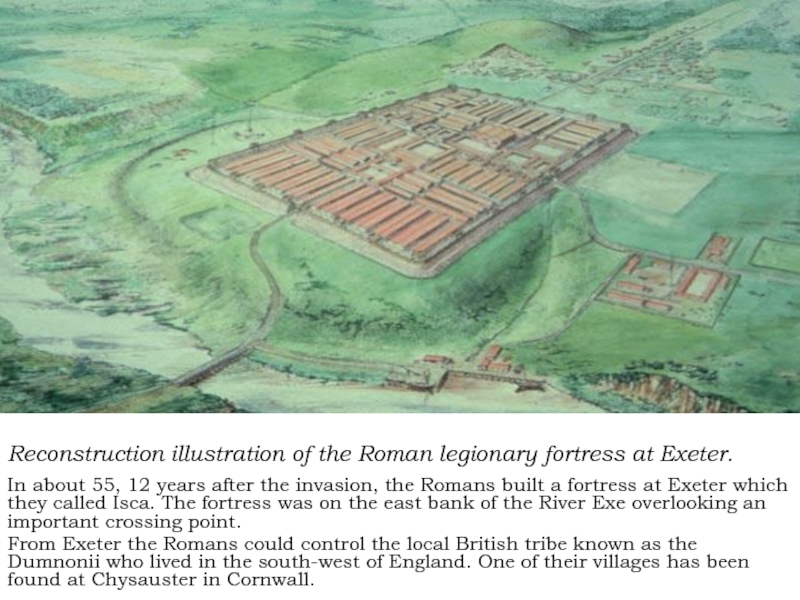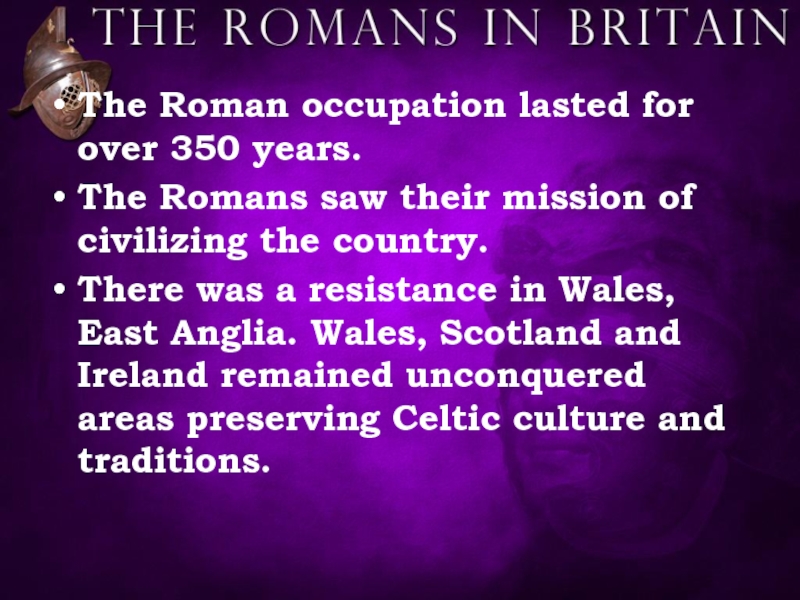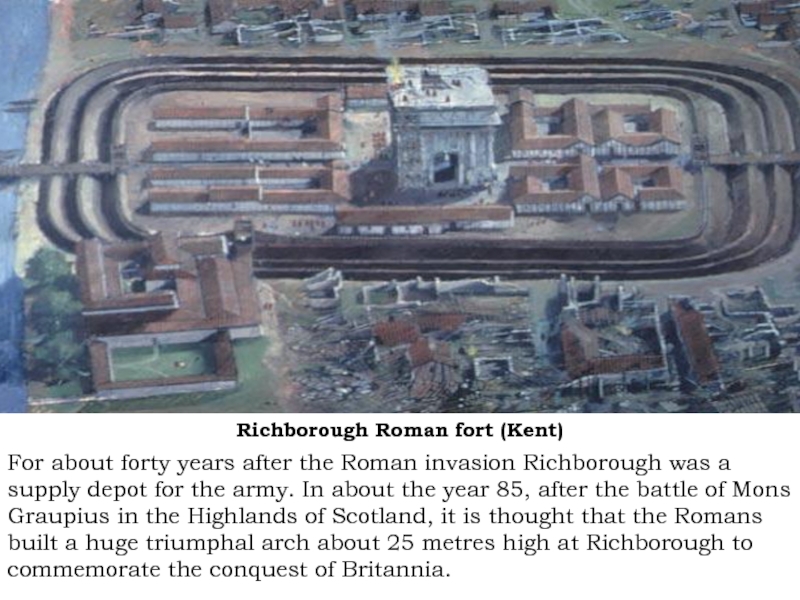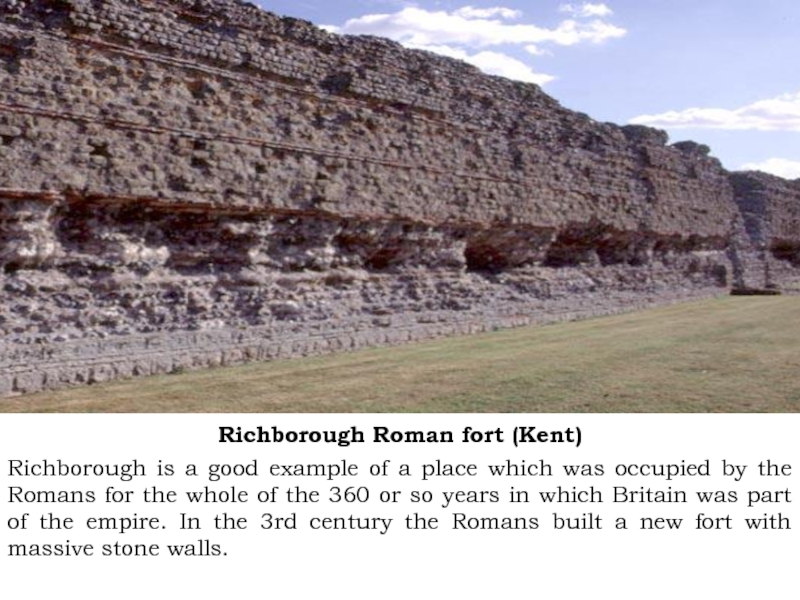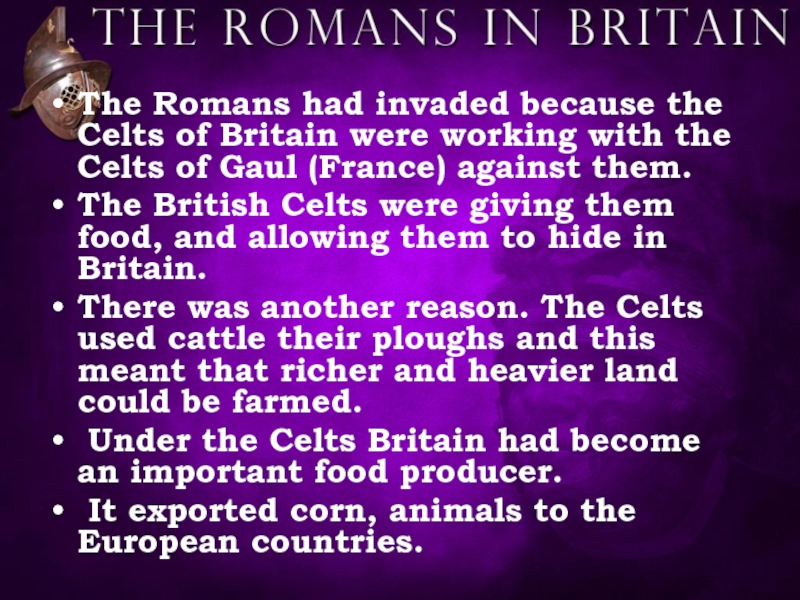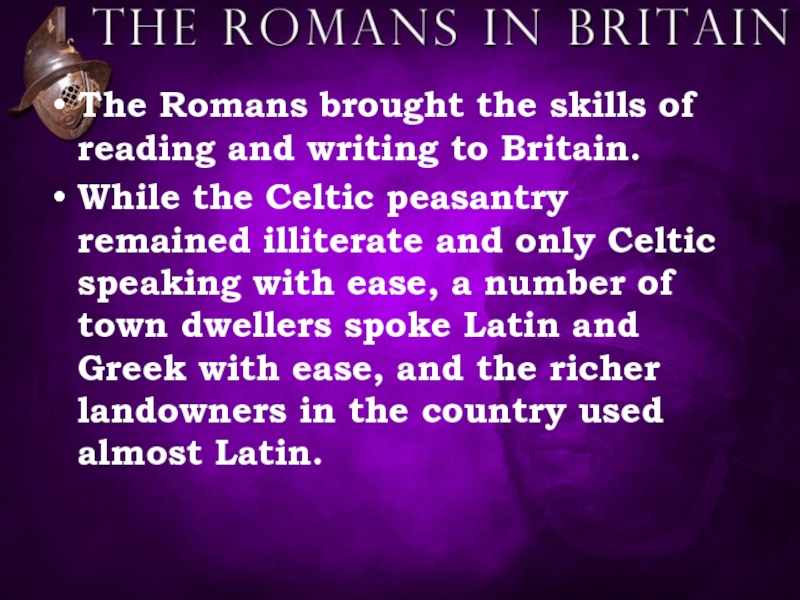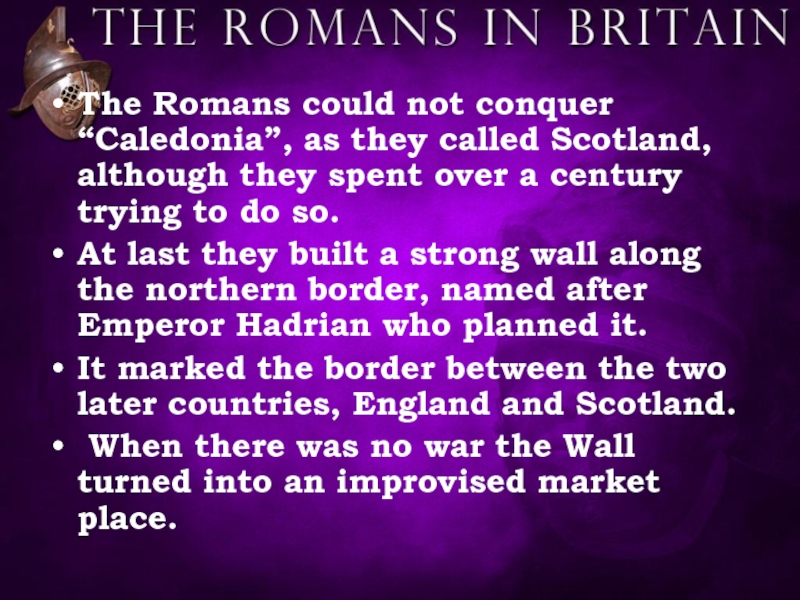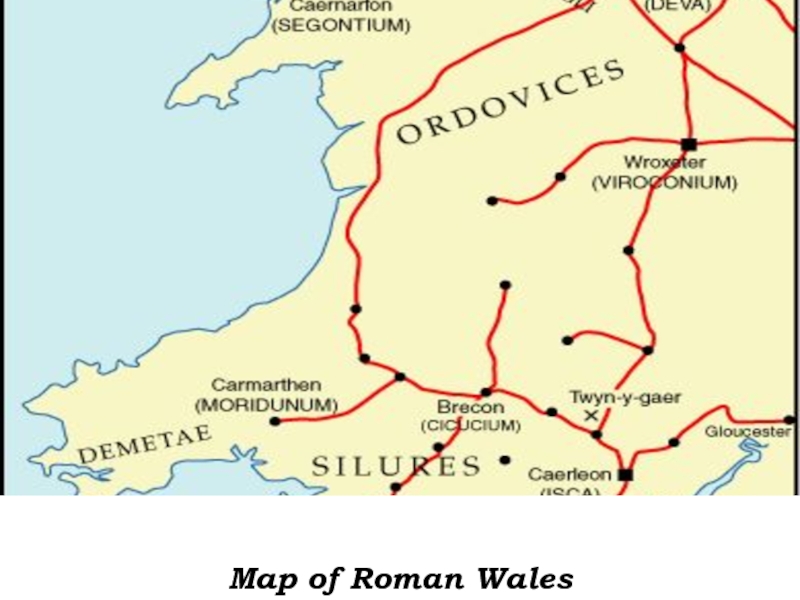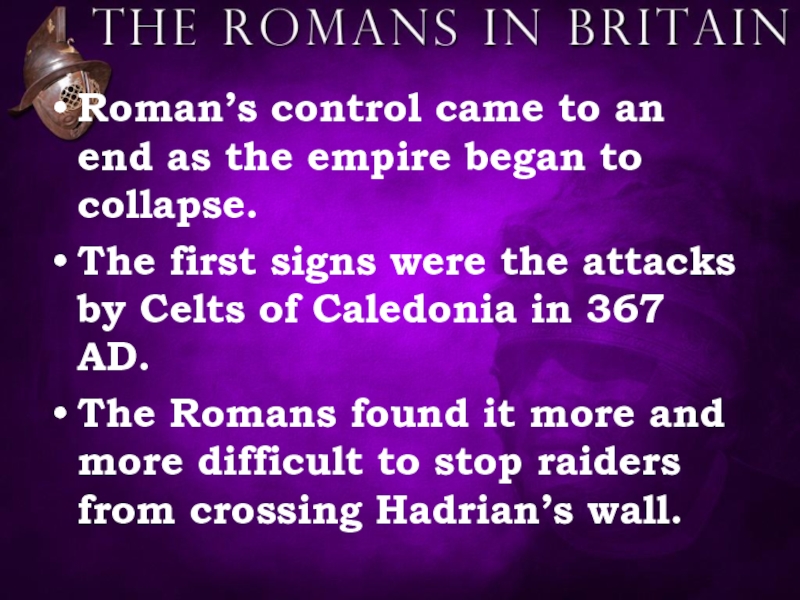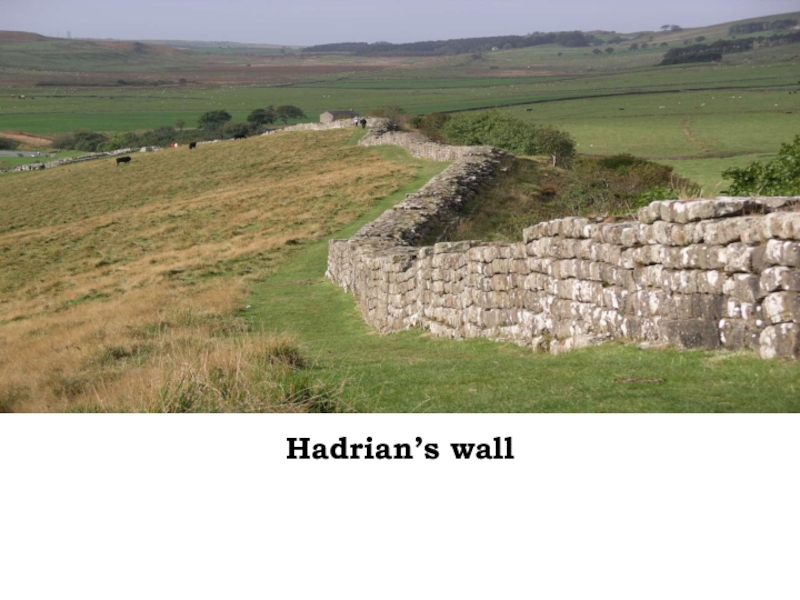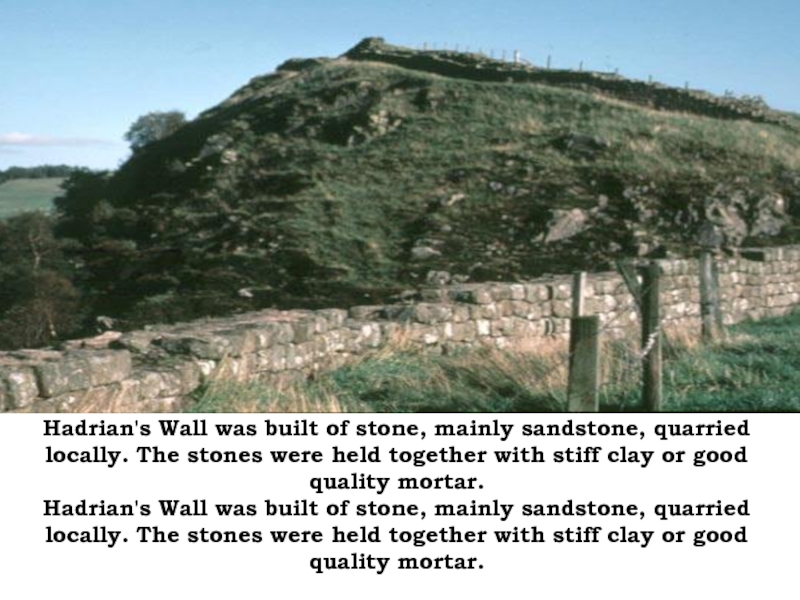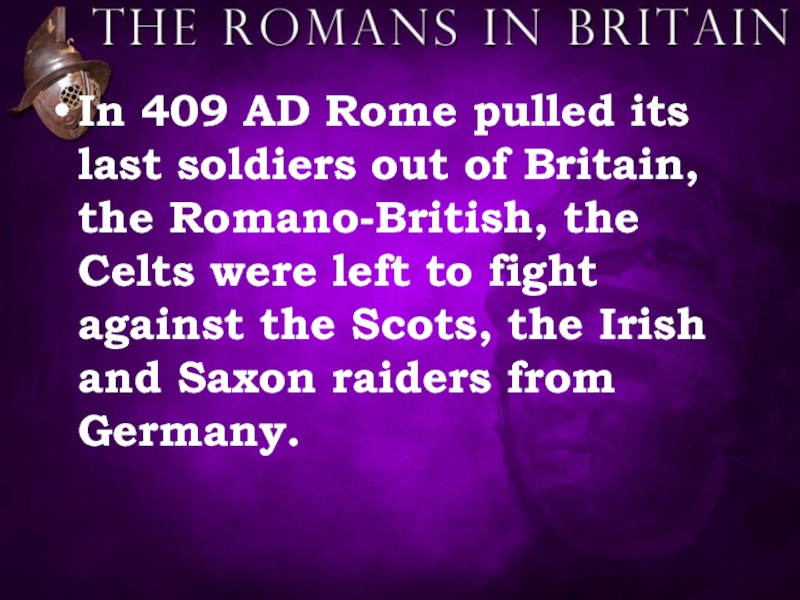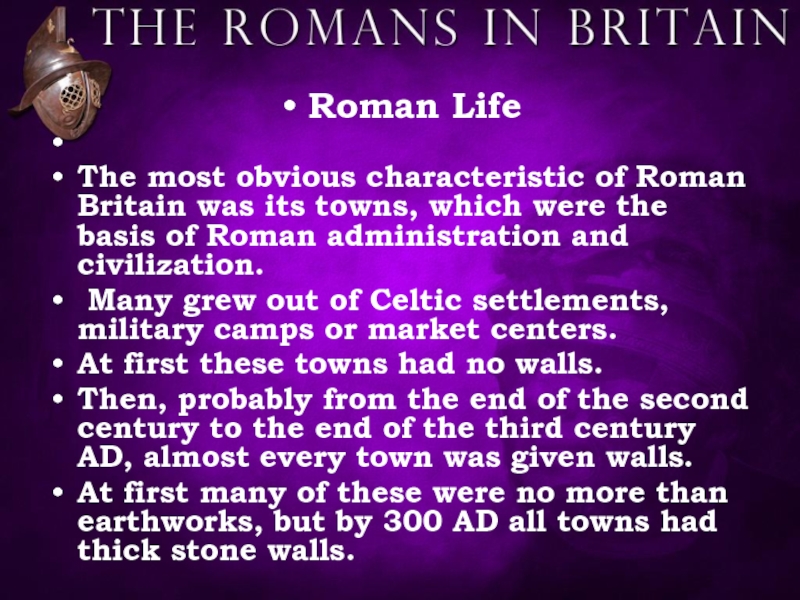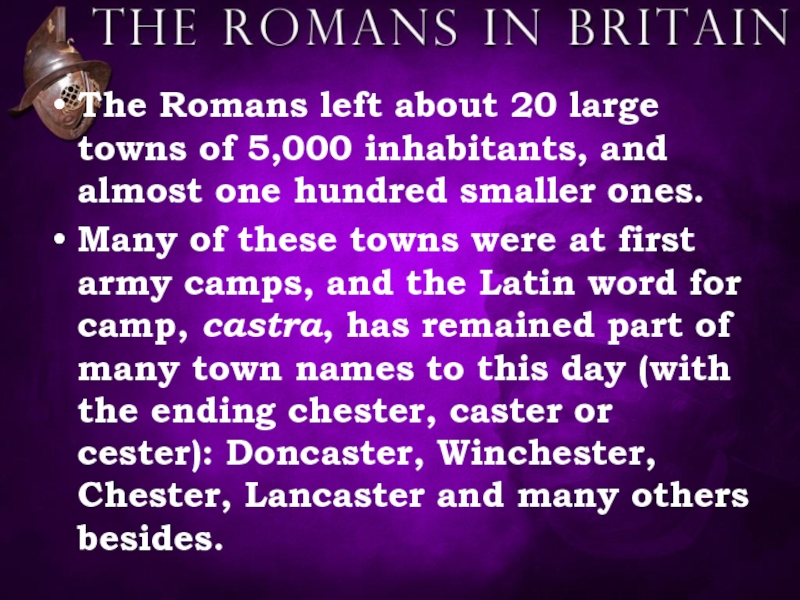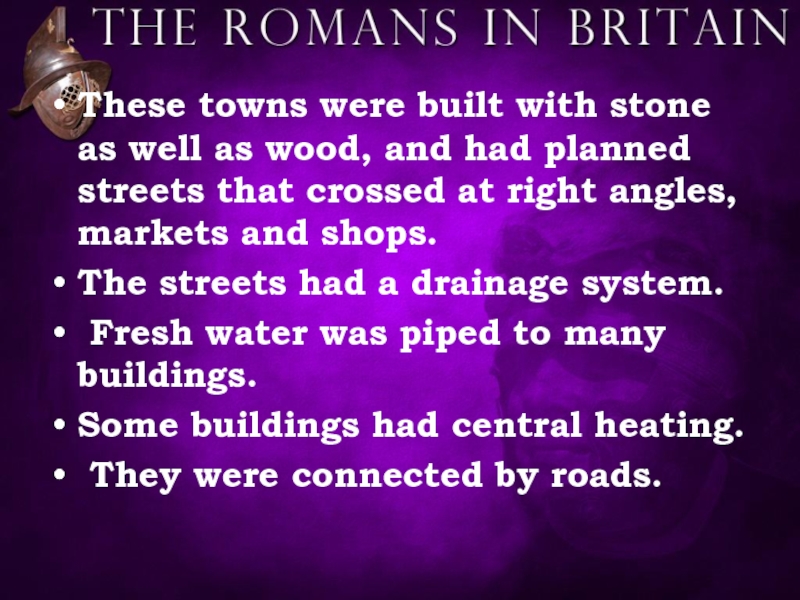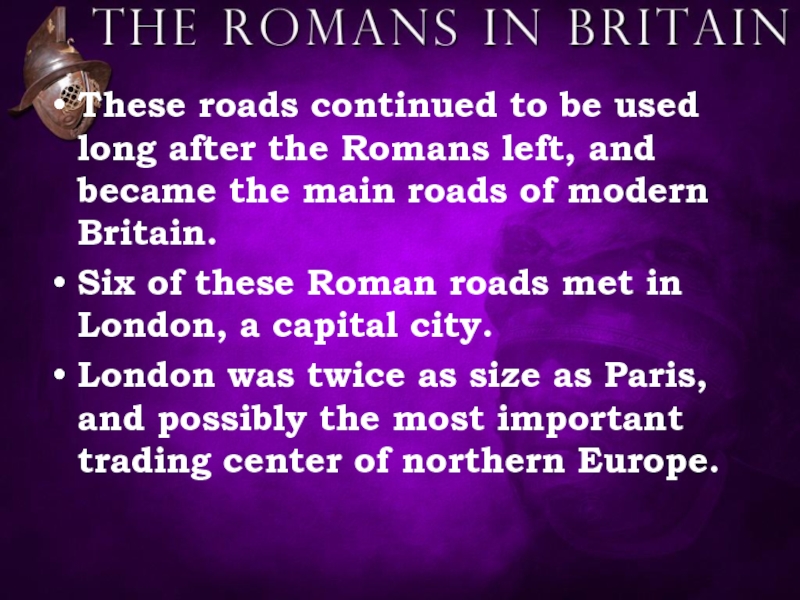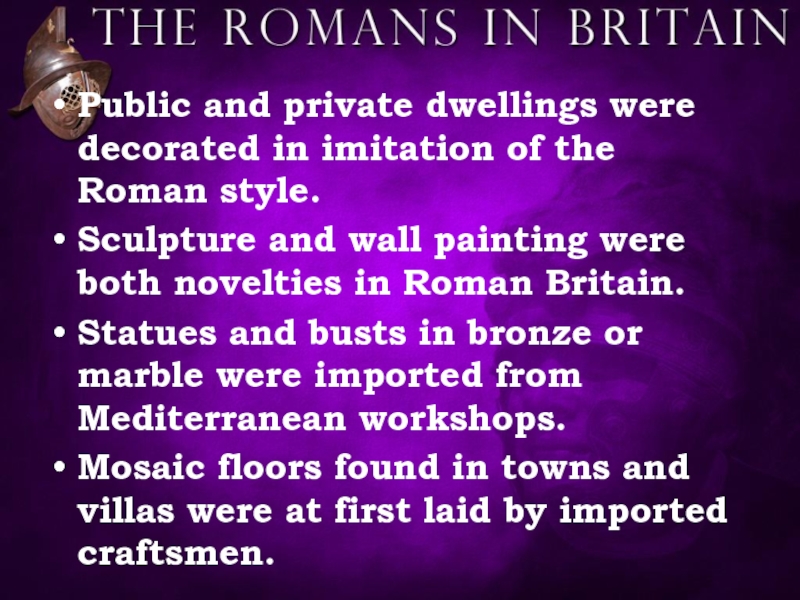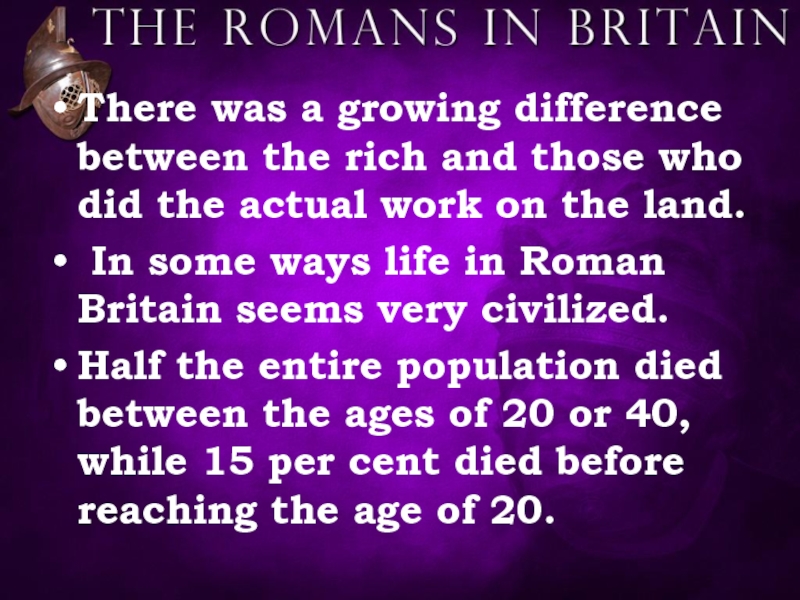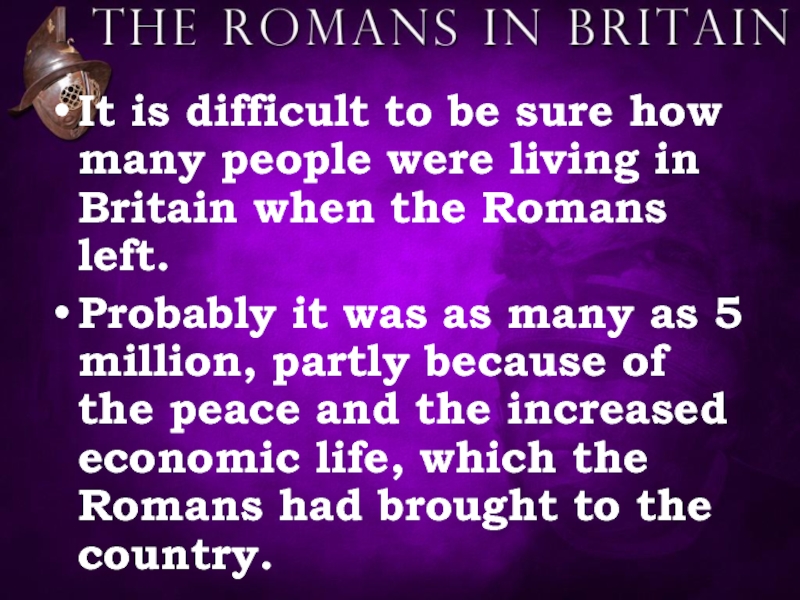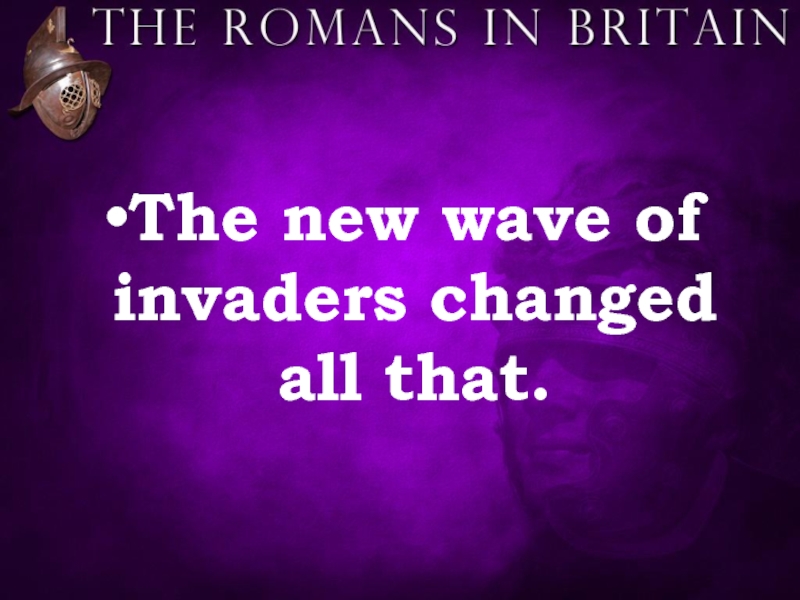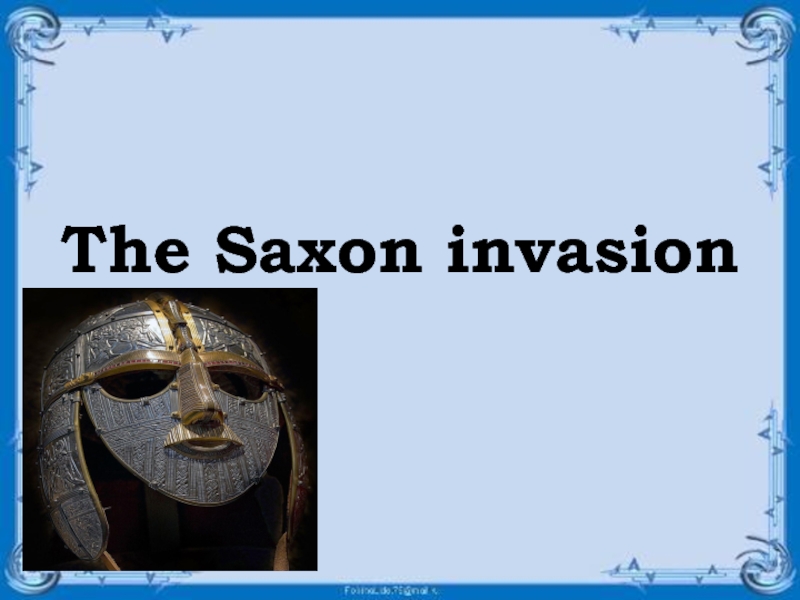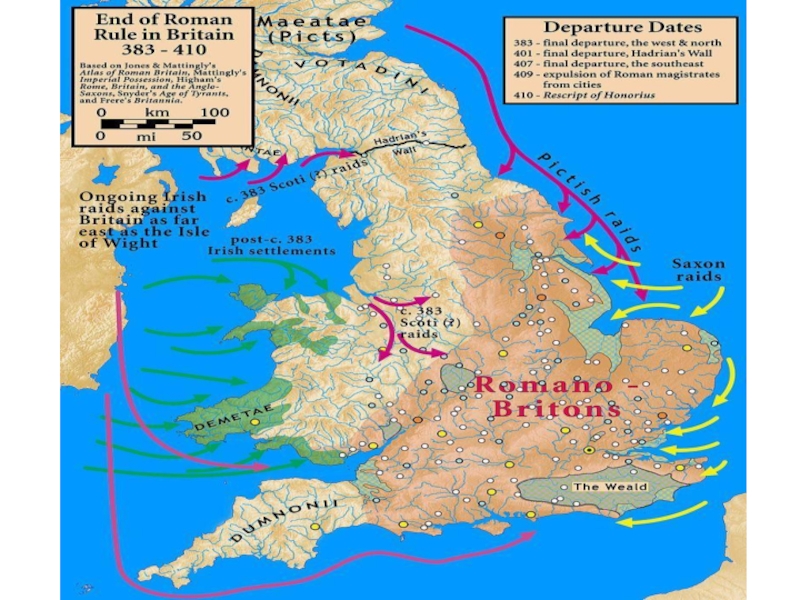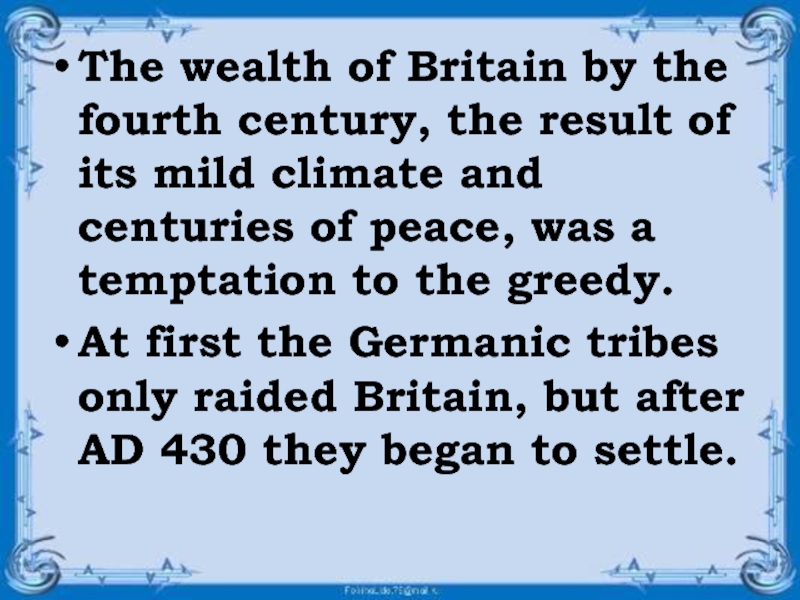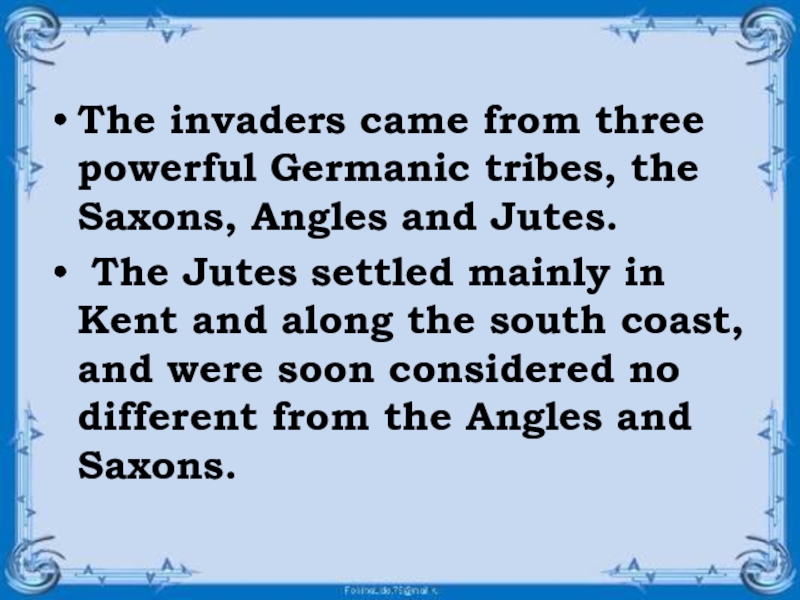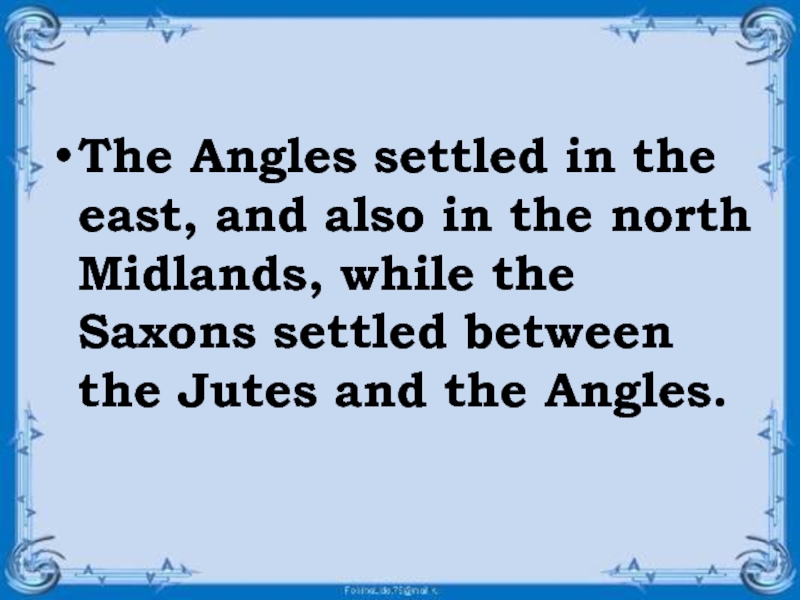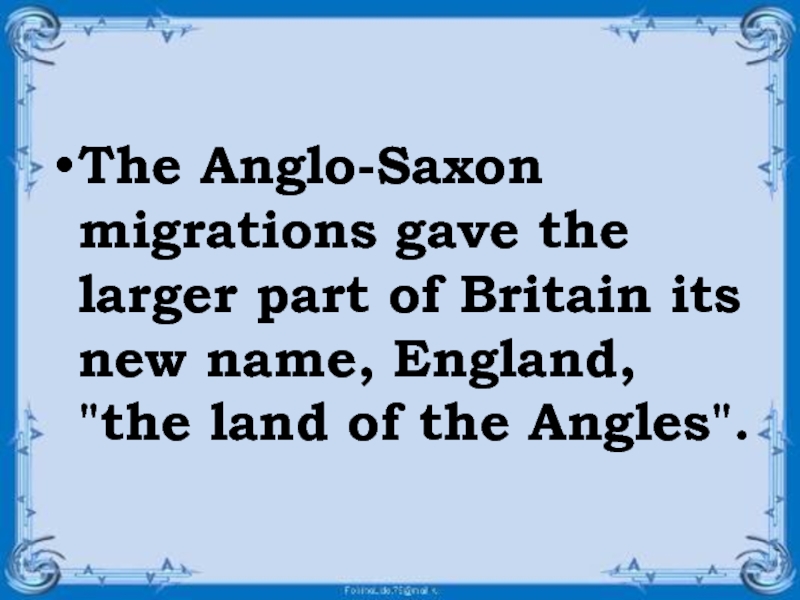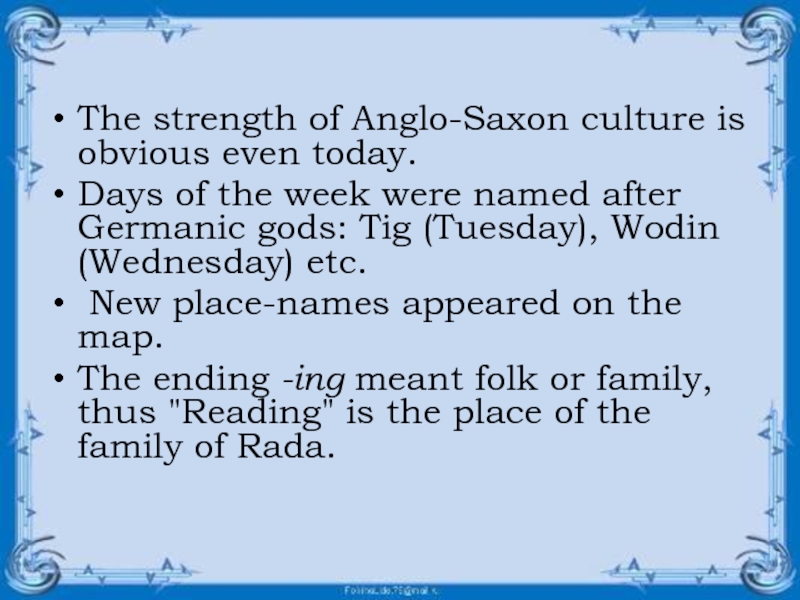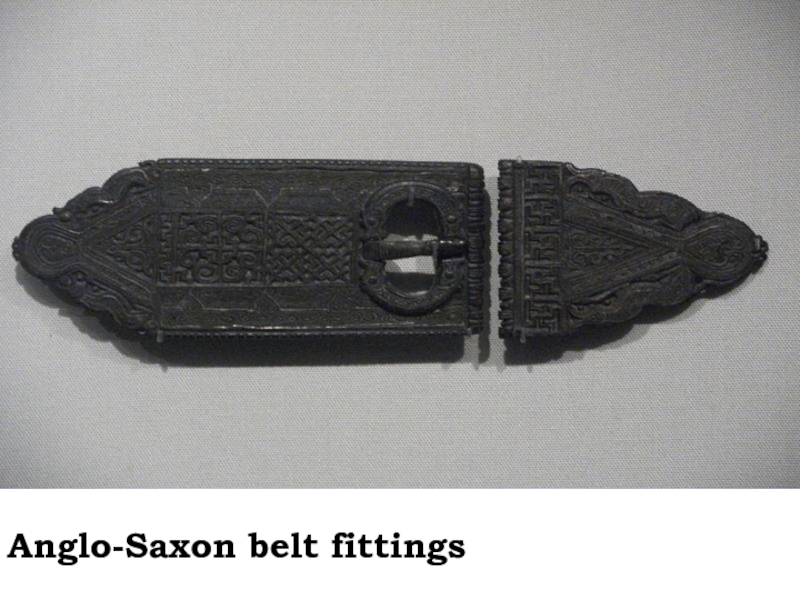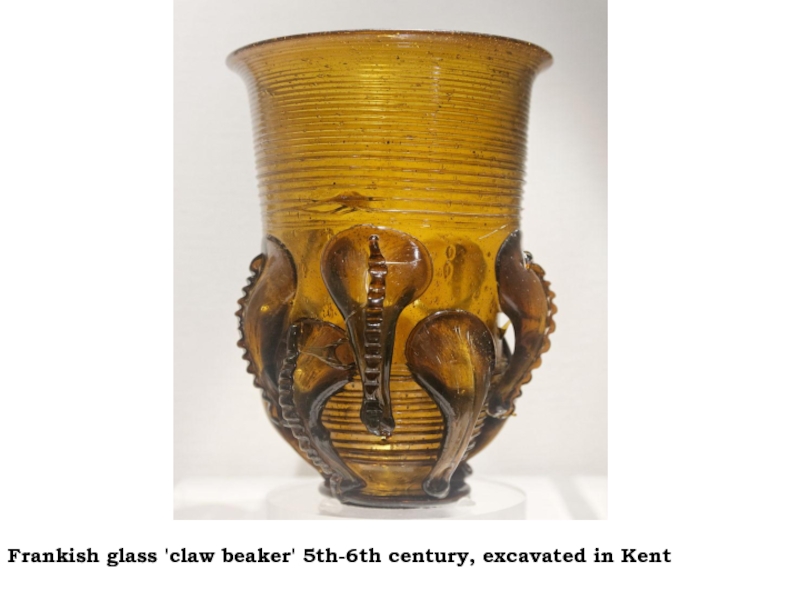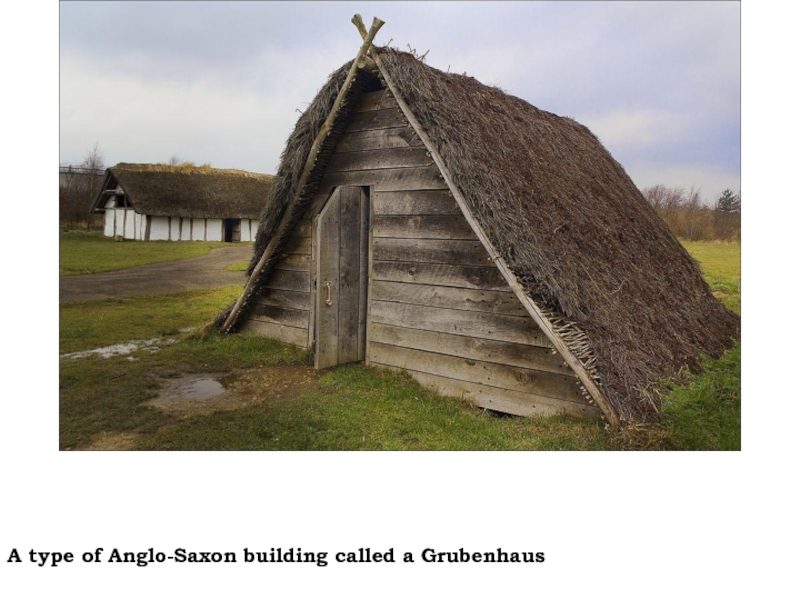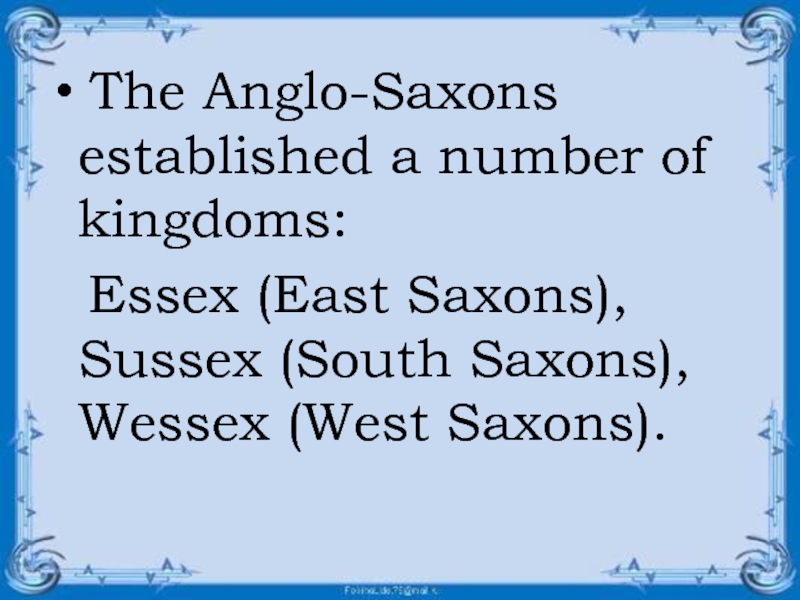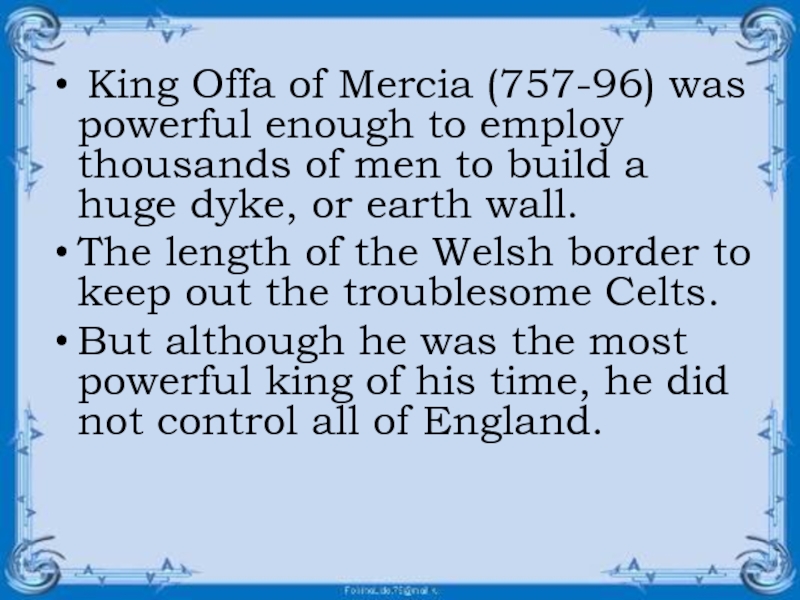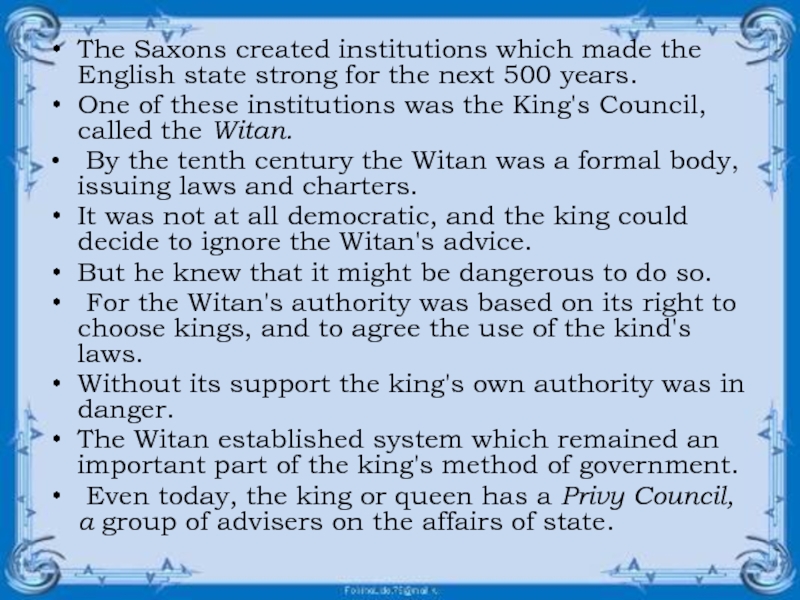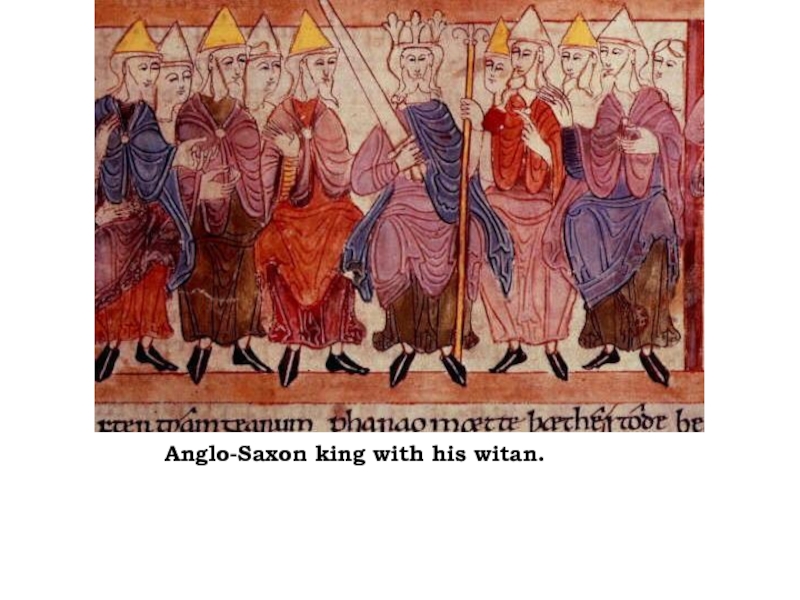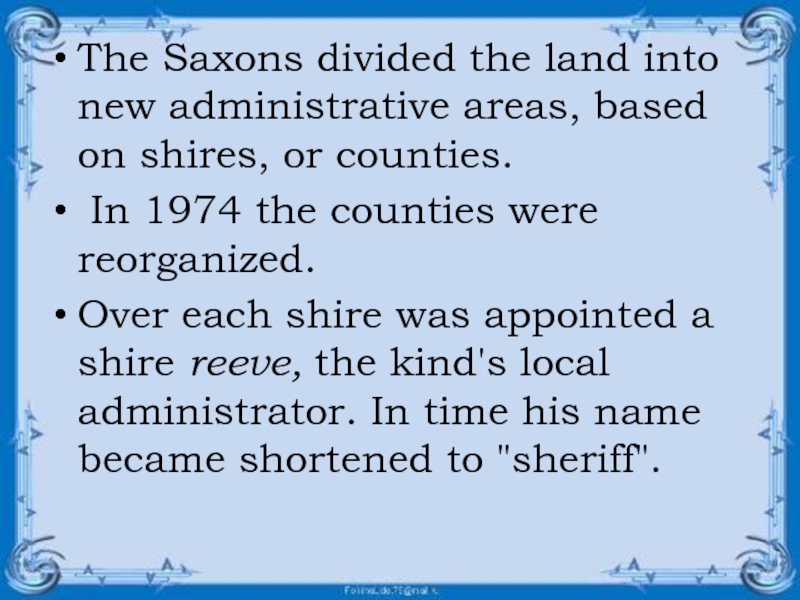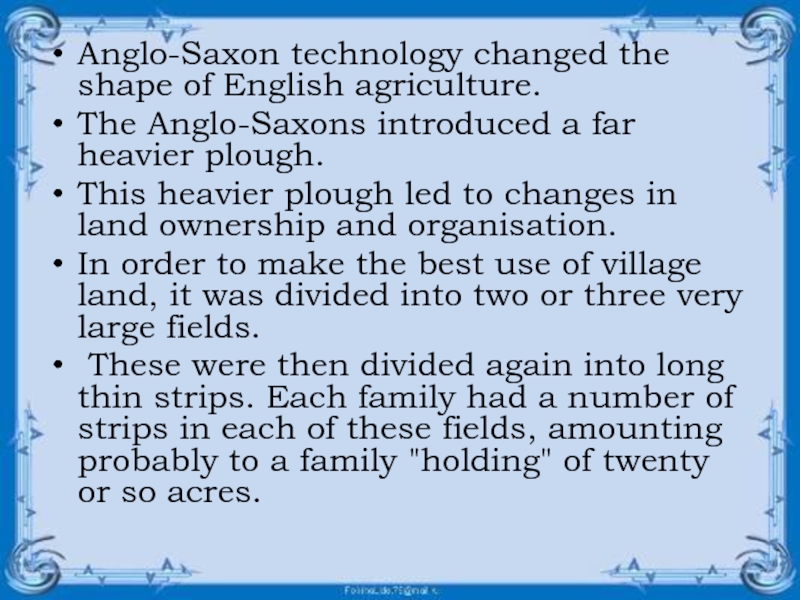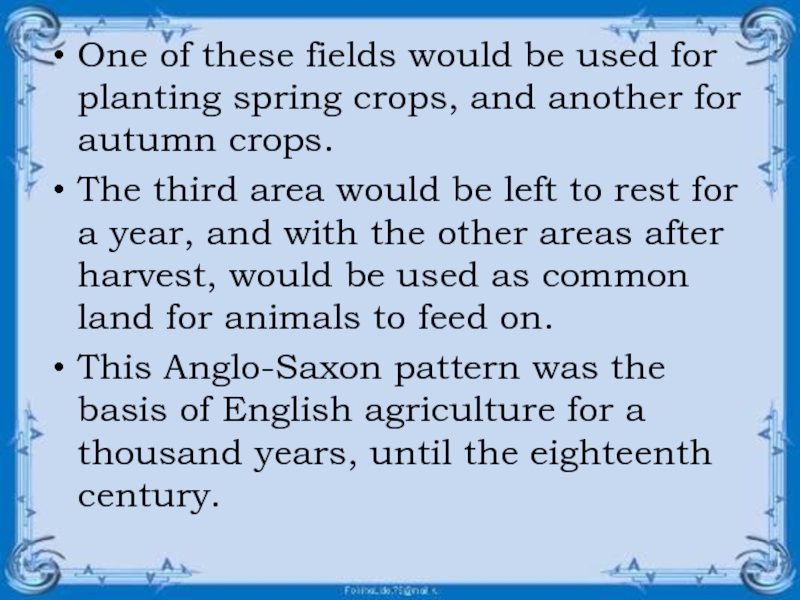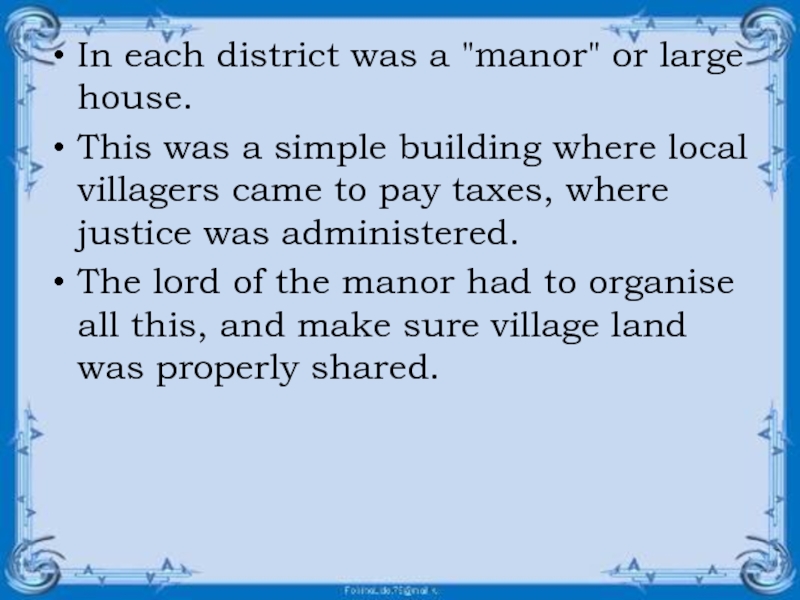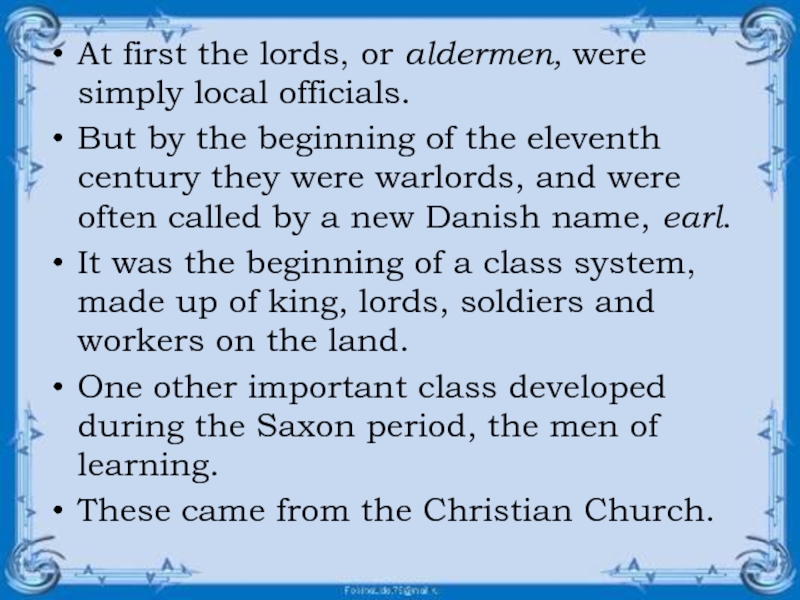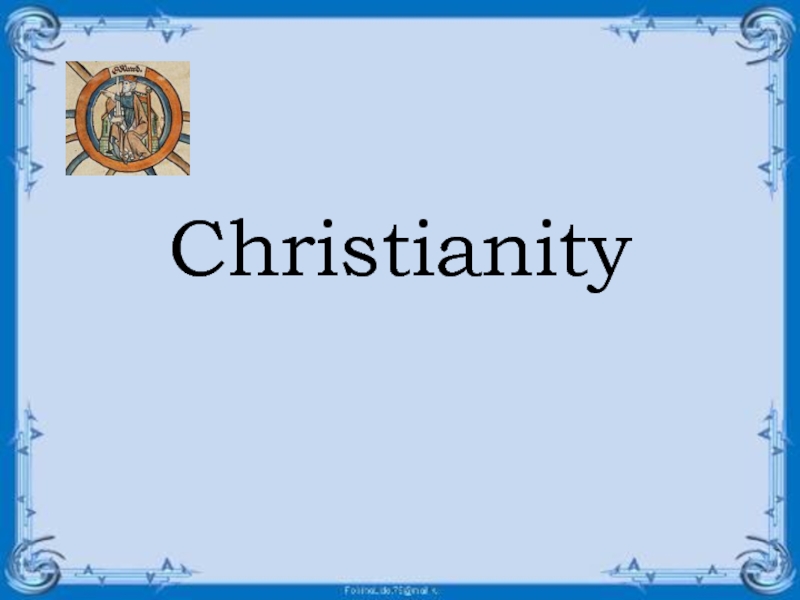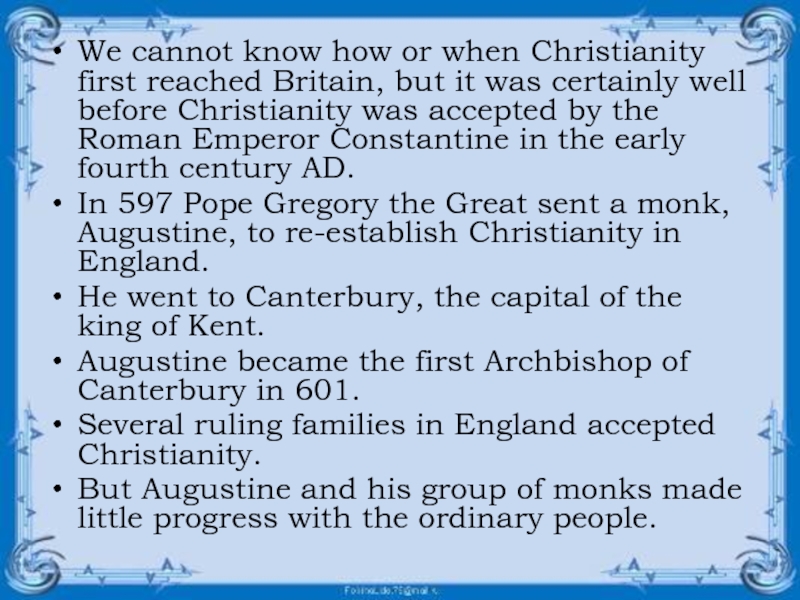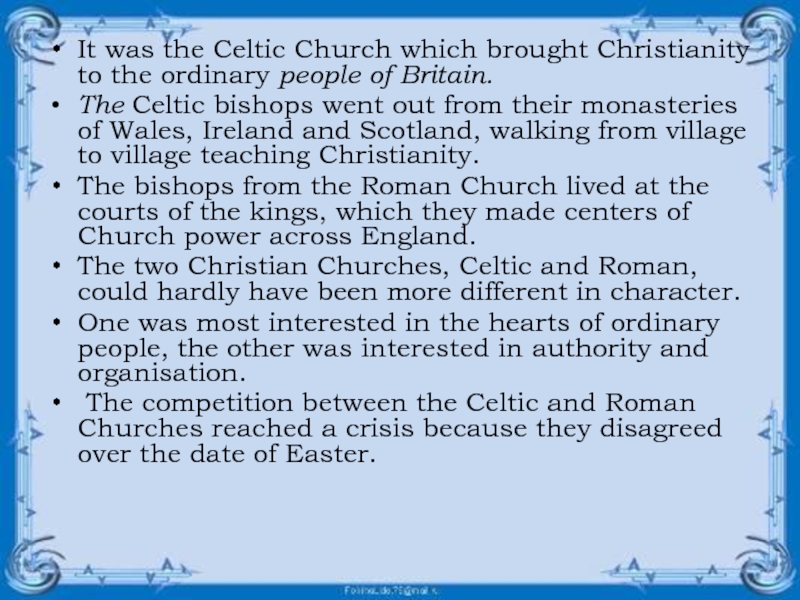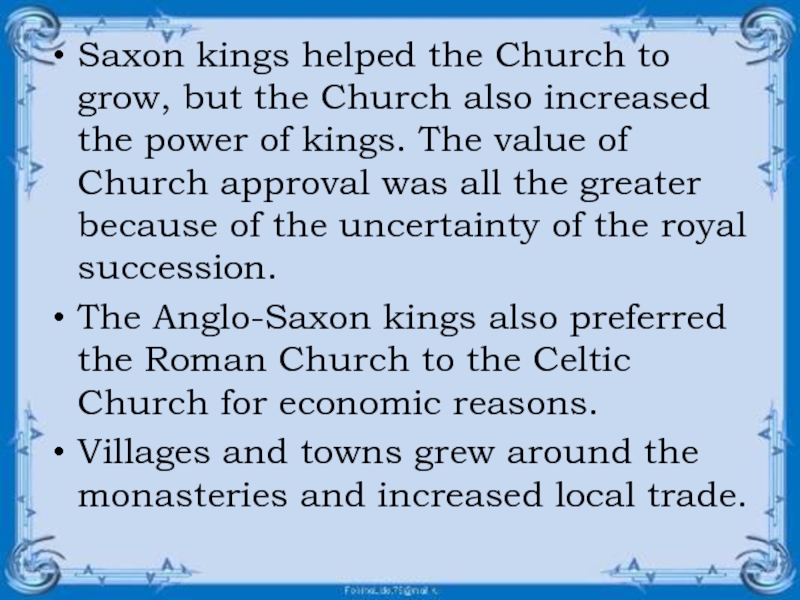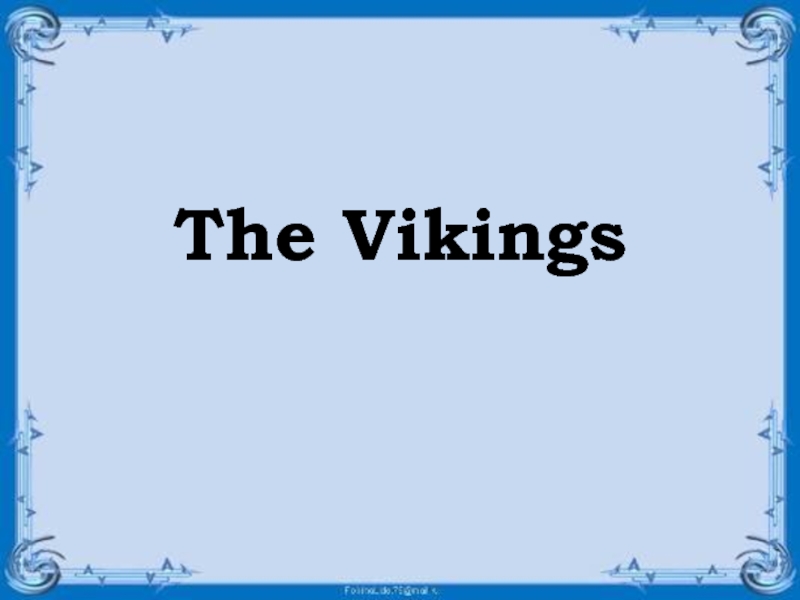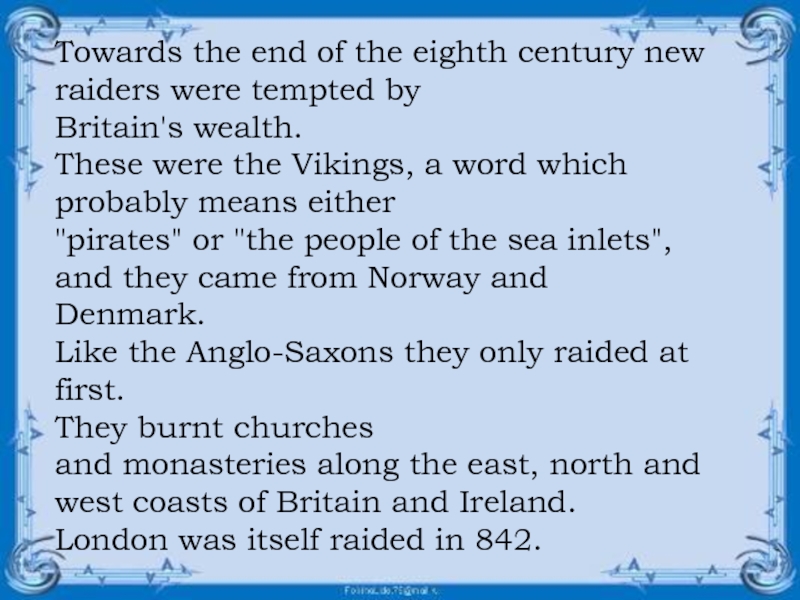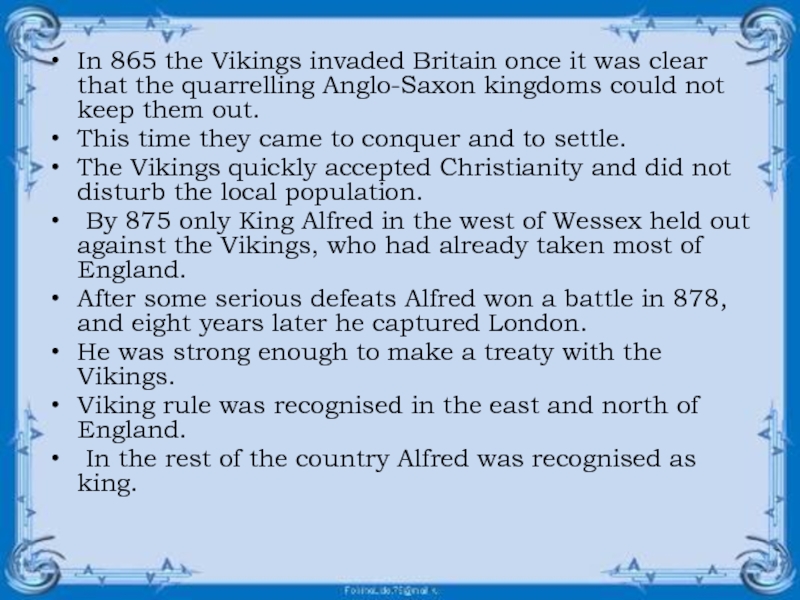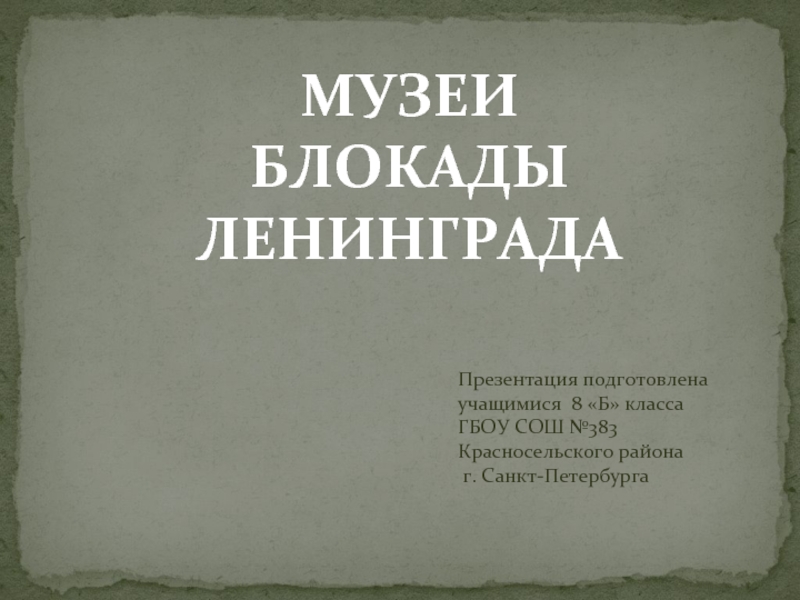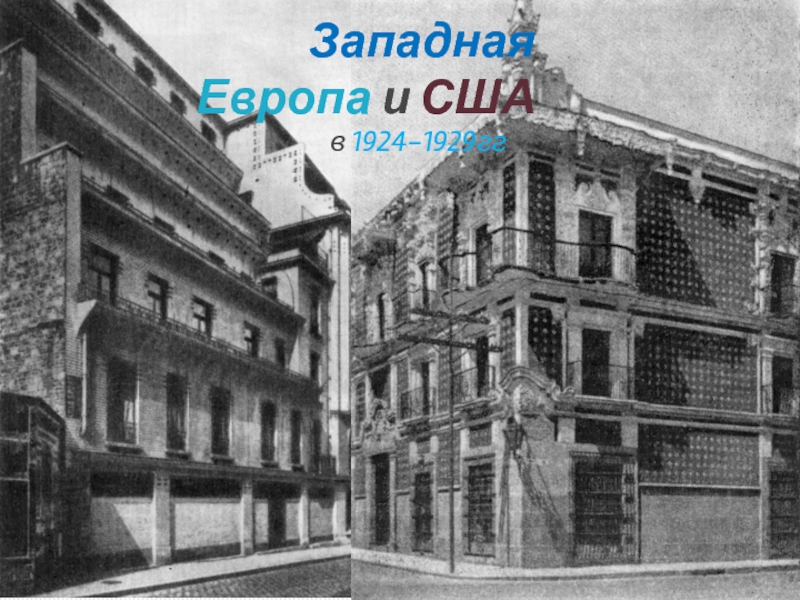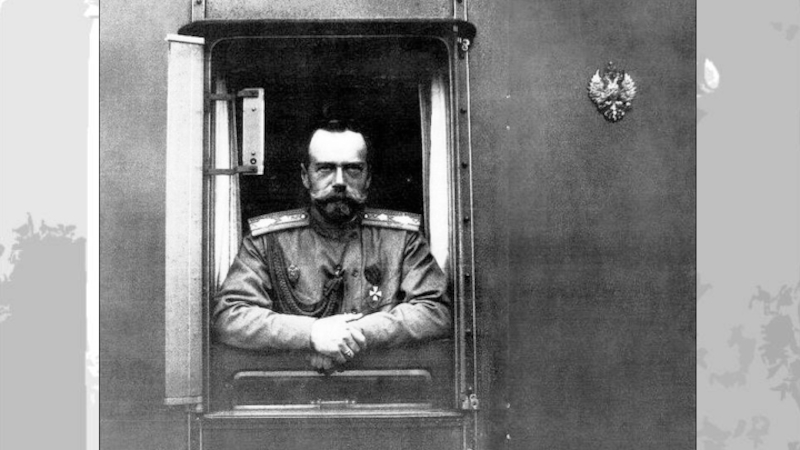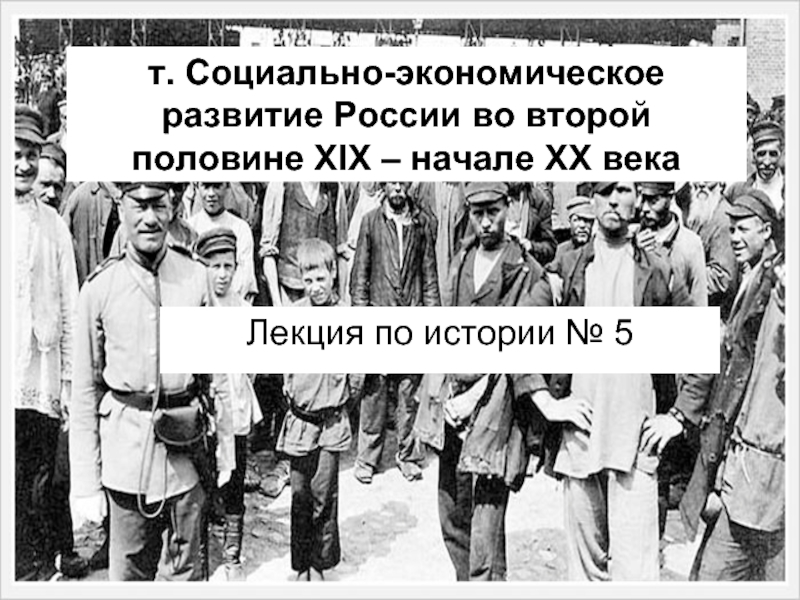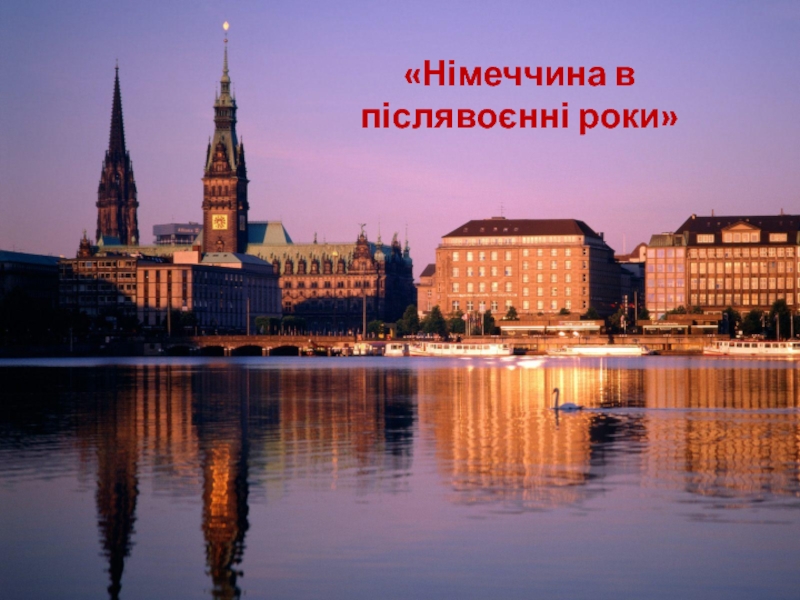- Главная
- Разное
- Дизайн
- Бизнес и предпринимательство
- Аналитика
- Образование
- Развлечения
- Красота и здоровье
- Финансы
- Государство
- Путешествия
- Спорт
- Недвижимость
- Армия
- Графика
- Культурология
- Еда и кулинария
- Лингвистика
- Английский язык
- Астрономия
- Алгебра
- Биология
- География
- Детские презентации
- Информатика
- История
- Литература
- Маркетинг
- Математика
- Медицина
- Менеджмент
- Музыка
- МХК
- Немецкий язык
- ОБЖ
- Обществознание
- Окружающий мир
- Педагогика
- Русский язык
- Технология
- Физика
- Философия
- Химия
- Шаблоны, картинки для презентаций
- Экология
- Экономика
- Юриспруденция
The romans. Roman life презентация
Содержание
- 1. The romans. Roman life
- 5. Julius Caesar first came to Britain in
- 6. Almost a century later in 43 AD
- 7. Map of the west of England in
- 8. The Iron Age hill fort of Maiden
- 9. Reconstruction illustration of the Roman legionary fortress
- 10. The Roman occupation lasted for over 350
- 11. Richborough Roman fort (Kent) For about forty
- 12. Richborough Roman fort (Kent) Richborough is a
- 13. The Romans had invaded because the Celts
- 14. The Romans brought the skills of reading
- 15. The Romans could not conquer “Caledonia”, as
- 16. Map of Roman Wales
- 17. Roman’s control came to an end as
- 18. Hadrian’s wall
- 19. Hadrian's Wall was built of stone, mainly
- 20. In 409 AD Rome pulled its last
- 21. Roman Life The most obvious characteristic
- 22. The Romans left about 20 large towns
- 23. These towns were built with stone as
- 24. These roads continued to be used long
- 25. The growth of large farms was outside
- 26. Public and private dwellings were decorated in
- 27. There was a growing difference between the
- 28. It is difficult to be sure how
- 29. The new wave of invaders changed all that.
- 30. The Saxon invasion
- 32. The wealth of Britain by the fourth
- 33. The invaders came from three powerful
- 34. The Angles settled in the east,
- 35. The Anglo-Saxon migrations gave the larger
- 36. The strength of Anglo-Saxon culture is
- 37. Anglo-Saxon belt fittings
- 38. Frankish glass 'claw beaker' 5th-6th century, excavated in Kent
- 39. A type of Anglo-Saxon building called a Grubenhaus
- 40. The Anglo-Saxons established a number of
- 41. King Offa of Mercia (757-96) was
- 42. Government and society
- 43. The Saxons created institutions which made the
- 44. Anglo-Saxon king with his witan.
- 45. The Saxons divided the land into new
- 46. Anglo-Saxon technology changed the shape of English
- 47. One of these fields would be used
- 48. In each district was a "manor" or
- 49. At first the lords, or aldermen, were
- 50. Christianity
- 51. We cannot know how or when Christianity
- 52. It was the Celtic Church which brought
- 53. Saxon kings helped the Church to grow,
- 54. The Vikings
- 55. Towards the
- 56. In 865 the Vikings invaded Britain once
Слайд 1LECTURE 2
Table of Contents
1. The Romans
2. Roman Life
http://www.iadb.co.uk/romans/main.php?P=4
Слайд 5Julius Caesar first came to Britain in 55 BC, but Roman
army occupied Britain almost a century later.
Julius Caesar carried out two expeditions in 55 and 54 BC, neither of which led to immediate Roman settlement.
Julius Caesar carried out two expeditions in 55 and 54 BC, neither of which led to immediate Roman settlement.
Слайд 6Almost a century later in 43 AD Emperor Claudius sent his
legions over the sea to occupy Britain.
Слайд 7Map of the west of England in the Roman conquest period
in the years 43 - 55.
The Second Legion Augusta conquered the west of England under the command of a general named Vespasian who would later become an emperor.
Слайд 8The Iron Age hill fort of Maiden Castle (Dorset)
Vespasian met strong
resistance from the people of Dorset, known as the Durotriges, who did not wish to be conquered by the Romans. The Durotriges lived in hill forts like Maiden Castle near Dorchester. Maiden Castle was surrounded by massive banks and ditches and the entrances were strongly fortified. After a siege the Romans broke down the gates and slaughtered the people inside.
Слайд 9Reconstruction illustration of the Roman legionary fortress at Exeter.
In about 55,
12 years after the invasion, the Romans built a fortress at Exeter which they called Isca. The fortress was on the east bank of the River Exe overlooking an important crossing point.
From Exeter the Romans could control the local British tribe known as the Dumnonii who lived in the south-west of England. One of their villages has been found at Chysauster in Cornwall.
From Exeter the Romans could control the local British tribe known as the Dumnonii who lived in the south-west of England. One of their villages has been found at Chysauster in Cornwall.
Слайд 10The Roman occupation lasted for over 350 years.
The Romans saw
their mission of civilizing the country.
There was a resistance in Wales, East Anglia. Wales, Scotland and Ireland remained unconquered areas preserving Celtic culture and traditions.
There was a resistance in Wales, East Anglia. Wales, Scotland and Ireland remained unconquered areas preserving Celtic culture and traditions.
Слайд 11Richborough Roman fort (Kent)
For about forty years after the Roman invasion
Richborough was a supply depot for the army. In about the year 85, after the battle of Mons Graupius in the Highlands of Scotland, it is thought that the Romans built a huge triumphal arch about 25 metres high at Richborough to commemorate the conquest of Britannia.
Слайд 12Richborough Roman fort (Kent)
Richborough is a good example of a place
which was occupied by the Romans for the whole of the 360 or so years in which Britain was part of the empire. In the 3rd century the Romans built a new fort with massive stone walls.
Слайд 13The Romans had invaded because the Celts of Britain were working
with the Celts of Gaul (France) against them.
The British Celts were giving them food, and allowing them to hide in Britain.
There was another reason. The Celts used cattle their ploughs and this meant that richer and heavier land could be farmed.
Under the Celts Britain had become an important food producer.
It exported corn, animals to the European countries.
The British Celts were giving them food, and allowing them to hide in Britain.
There was another reason. The Celts used cattle their ploughs and this meant that richer and heavier land could be farmed.
Under the Celts Britain had become an important food producer.
It exported corn, animals to the European countries.
Слайд 14The Romans brought the skills of reading and writing to Britain.
While the Celtic peasantry remained illiterate and only Celtic speaking with ease, a number of town dwellers spoke Latin and Greek with ease, and the richer landowners in the country used almost Latin.
Слайд 15The Romans could not conquer “Caledonia”, as they called Scotland, although
they spent over a century trying to do so.
At last they built a strong wall along the northern border, named after Emperor Hadrian who planned it.
It marked the border between the two later countries, England and Scotland.
When there was no war the Wall turned into an improvised market place.
At last they built a strong wall along the northern border, named after Emperor Hadrian who planned it.
It marked the border between the two later countries, England and Scotland.
When there was no war the Wall turned into an improvised market place.
Слайд 17Roman’s control came to an end as the empire began to
collapse.
The first signs were the attacks by Celts of Caledonia in 367 AD.
The Romans found it more and more difficult to stop raiders from crossing Hadrian’s wall.
The first signs were the attacks by Celts of Caledonia in 367 AD.
The Romans found it more and more difficult to stop raiders from crossing Hadrian’s wall.
Слайд 19Hadrian's Wall was built of stone, mainly sandstone, quarried locally. The
stones were held together with stiff clay or good quality mortar.
Hadrian's Wall was built of stone, mainly sandstone, quarried locally. The stones were held together with stiff clay or good quality mortar.
Слайд 20In 409 AD Rome pulled its last soldiers out of Britain,
the Romano-British, the Celts were left to fight against the Scots, the Irish and Saxon raiders from Germany.
Слайд 21Roman Life
The most obvious characteristic of Roman Britain was its towns,
which were the basis of Roman administration and civilization.
Many grew out of Celtic settlements, military camps or market centers.
At first these towns had no walls.
Then, probably from the end of the second century to the end of the third century AD, almost every town was given walls.
At first many of these were no more than earthworks, but by 300 AD all towns had thick stone walls.
Many grew out of Celtic settlements, military camps or market centers.
At first these towns had no walls.
Then, probably from the end of the second century to the end of the third century AD, almost every town was given walls.
At first many of these were no more than earthworks, but by 300 AD all towns had thick stone walls.
Слайд 22The Romans left about 20 large towns of 5,000 inhabitants, and
almost one hundred smaller ones.
Many of these towns were at first army camps, and the Latin word for camp, castra, has remained part of many town names to this day (with the ending chester, caster or cester): Doncaster, Winchester, Chester, Lancaster and many others besides.
Many of these towns were at first army camps, and the Latin word for camp, castra, has remained part of many town names to this day (with the ending chester, caster or cester): Doncaster, Winchester, Chester, Lancaster and many others besides.
Слайд 23These towns were built with stone as well as wood, and
had planned streets that crossed at right angles, markets and shops.
The streets had a drainage system.
Fresh water was piped to many buildings.
Some buildings had central heating.
They were connected by roads.
The streets had a drainage system.
Fresh water was piped to many buildings.
Some buildings had central heating.
They were connected by roads.
Слайд 24These roads continued to be used long after the Romans left,
and became the main roads of modern Britain.
Six of these Roman roads met in London, a capital city.
London was twice as size as Paris, and possibly the most important trading center of northern Europe.
Six of these Roman roads met in London, a capital city.
London was twice as size as Paris, and possibly the most important trading center of northern Europe.
Слайд 25The growth of large farms was outside the towns.
They were
called “villas”.
These belonged to the richer Britons who were more Roman than Celt in their manners.
Each villa had many workers.
The villas were close to towns so that the crops could be sold easily.
These belonged to the richer Britons who were more Roman than Celt in their manners.
Each villa had many workers.
The villas were close to towns so that the crops could be sold easily.
Слайд 26Public and private dwellings were decorated in imitation of the Roman
style.
Sculpture and wall painting were both novelties in Roman Britain.
Statues and busts in bronze or marble were imported from Mediterranean workshops.
Mosaic floors found in towns and villas were at first laid by imported craftsmen.
Sculpture and wall painting were both novelties in Roman Britain.
Statues and busts in bronze or marble were imported from Mediterranean workshops.
Mosaic floors found in towns and villas were at first laid by imported craftsmen.
Слайд 27There was a growing difference between the rich and those who
did the actual work on the land.
In some ways life in Roman Britain seems very civilized.
Half the entire population died between the ages of 20 or 40, while 15 per cent died before reaching the age of 20.
In some ways life in Roman Britain seems very civilized.
Half the entire population died between the ages of 20 or 40, while 15 per cent died before reaching the age of 20.
Слайд 28It is difficult to be sure how many people were living
in Britain when the Romans left.
Probably it was as many as 5 million, partly because of the peace and the increased economic life, which the Romans had brought to the country.
Probably it was as many as 5 million, partly because of the peace and the increased economic life, which the Romans had brought to the country.
Слайд 32The wealth of Britain by the fourth century, the result of
its mild climate and centuries of peace, was a temptation to the greedy.
At first the Germanic tribes only raided Britain, but after AD 430 they began to settle.
At first the Germanic tribes only raided Britain, but after AD 430 they began to settle.
Слайд 33
The invaders came from three powerful Germanic tribes, the Saxons, Angles
and Jutes.
The Jutes settled mainly in Kent and along the south coast, and were soon considered no different from the Angles and Saxons.
The Jutes settled mainly in Kent and along the south coast, and were soon considered no different from the Angles and Saxons.
Слайд 34
The Angles settled in the east, and also in the north
Midlands, while the Saxons settled between the Jutes and the Angles.
Слайд 35
The Anglo-Saxon migrations gave the larger part of Britain its new
name, England, "the land of the Angles".
Слайд 36
The strength of Anglo-Saxon culture is obvious even today.
Days of
the week were named after Germanic gods: Tig (Tuesday), Wodin (Wednesday) etc.
New place-names appeared on the map.
The ending -ing meant folk or family, thus "Reading" is the place of the family of Rada.
New place-names appeared on the map.
The ending -ing meant folk or family, thus "Reading" is the place of the family of Rada.
Слайд 40 The Anglo-Saxons established a number of kingdoms:
Essex (East Saxons),
Sussex (South Saxons), Wessex (West Saxons).
Слайд 41 King Offa of Mercia (757-96) was powerful enough to employ
thousands of men to build a huge dyke, or earth wall.
The length of the Welsh border to keep out the troublesome Celts.
But although he was the most powerful king of his time, he did not control all of England.
The length of the Welsh border to keep out the troublesome Celts.
But although he was the most powerful king of his time, he did not control all of England.
Слайд 43The Saxons created institutions which made the English state strong for
the next 500 years.
One of these institutions was the King's Council, called the Witan.
By the tenth century the Witan was a formal body, issuing laws and charters.
It was not at all democratic, and the king could decide to ignore the Witan's advice.
But he knew that it might be dangerous to do so.
For the Witan's authority was based on its right to choose kings, and to agree the use of the kind's laws.
Without its support the king's own authority was in danger.
The Witan established system which remained an important part of the king's method of government.
Even today, the king or queen has a Privy Council, a group of advisers on the affairs of state.
One of these institutions was the King's Council, called the Witan.
By the tenth century the Witan was a formal body, issuing laws and charters.
It was not at all democratic, and the king could decide to ignore the Witan's advice.
But he knew that it might be dangerous to do so.
For the Witan's authority was based on its right to choose kings, and to agree the use of the kind's laws.
Without its support the king's own authority was in danger.
The Witan established system which remained an important part of the king's method of government.
Even today, the king or queen has a Privy Council, a group of advisers on the affairs of state.
Слайд 45The Saxons divided the land into new administrative areas, based on
shires, or counties.
In 1974 the counties were reorganized.
Over each shire was appointed a shire reeve, the kind's local administrator. In time his name became shortened to "sheriff".
In 1974 the counties were reorganized.
Over each shire was appointed a shire reeve, the kind's local administrator. In time his name became shortened to "sheriff".
Слайд 46Anglo-Saxon technology changed the shape of English agriculture.
The Anglo-Saxons introduced
a far heavier plough.
This heavier plough led to changes in land ownership and organisation.
In order to make the best use of village land, it was divided into two or three very large fields.
These were then divided again into long thin strips. Each family had a number of strips in each of these fields, amounting probably to a family "holding" of twenty or so acres.
This heavier plough led to changes in land ownership and organisation.
In order to make the best use of village land, it was divided into two or three very large fields.
These were then divided again into long thin strips. Each family had a number of strips in each of these fields, amounting probably to a family "holding" of twenty or so acres.
Слайд 47One of these fields would be used for planting spring crops,
and another for autumn crops.
The third area would be left to rest for a year, and with the other areas after harvest, would be used as common land for animals to feed on.
This Anglo-Saxon pattern was the basis of English agriculture for a thousand years, until the eighteenth century.
The third area would be left to rest for a year, and with the other areas after harvest, would be used as common land for animals to feed on.
This Anglo-Saxon pattern was the basis of English agriculture for a thousand years, until the eighteenth century.
Слайд 48In each district was a "manor" or large house.
This was
a simple building where local villagers came to pay taxes, where justice was administered.
The lord of the manor had to organise all this, and make sure village land was properly shared.
The lord of the manor had to organise all this, and make sure village land was properly shared.
Слайд 49At first the lords, or aldermen, were simply local officials.
But
by the beginning of the eleventh century they were warlords, and were often called by a new Danish name, earl.
It was the beginning of a class system, made up of king, lords, soldiers and workers on the land.
One other important class developed during the Saxon period, the men of learning.
These came from the Christian Church.
It was the beginning of a class system, made up of king, lords, soldiers and workers on the land.
One other important class developed during the Saxon period, the men of learning.
These came from the Christian Church.
Слайд 51We cannot know how or when Christianity first reached Britain, but
it was certainly well before Christianity was accepted by the Roman Emperor Constantine in the early fourth century AD.
In 597 Pope Gregory the Great sent a monk, Augustine, to re-establish Christianity in England.
He went to Canterbury, the capital of the king of Kent.
Augustine became the first Archbishop of Canterbury in 601.
Several ruling families in England accepted Christianity.
But Augustine and his group of monks made little progress with the ordinary people.
In 597 Pope Gregory the Great sent a monk, Augustine, to re-establish Christianity in England.
He went to Canterbury, the capital of the king of Kent.
Augustine became the first Archbishop of Canterbury in 601.
Several ruling families in England accepted Christianity.
But Augustine and his group of monks made little progress with the ordinary people.
Слайд 52It was the Celtic Church which brought Christianity to the ordinary
people of Britain.
The Celtic bishops went out from their monasteries of Wales, Ireland and Scotland, walking from village to village teaching Christianity.
The bishops from the Roman Church lived at the courts of the kings, which they made centers of Church power across England.
The two Christian Churches, Celtic and Roman, could hardly have been more different in character.
One was most interested in the hearts of ordinary people, the other was interested in authority and organisation.
The competition between the Celtic and Roman Churches reached a crisis because they disagreed over the date of Easter.
The Celtic bishops went out from their monasteries of Wales, Ireland and Scotland, walking from village to village teaching Christianity.
The bishops from the Roman Church lived at the courts of the kings, which they made centers of Church power across England.
The two Christian Churches, Celtic and Roman, could hardly have been more different in character.
One was most interested in the hearts of ordinary people, the other was interested in authority and organisation.
The competition between the Celtic and Roman Churches reached a crisis because they disagreed over the date of Easter.
Слайд 53Saxon kings helped the Church to grow, but the Church also
increased the power of kings. The value of Church approval was all the greater because of the uncertainty of the royal succession.
The Anglo-Saxon kings also preferred the Roman Church to the Celtic Church for economic reasons.
Villages and towns grew around the monasteries and increased local trade.
The Anglo-Saxon kings also preferred the Roman Church to the Celtic Church for economic reasons.
Villages and towns grew around the monasteries and increased local trade.
Слайд 55
Towards the end of the eighth century new raiders were tempted
by
Britain's wealth.
These were the Vikings, a word which probably means either "pirates" or "the people of the sea inlets", and they came from Norway and Denmark.
Like the Anglo-Saxons they only raided at first.
They burnt churches and monasteries along the east, north and west coasts of Britain and Ireland.
London was itself raided in 842.
These were the Vikings, a word which probably means either "pirates" or "the people of the sea inlets", and they came from Norway and Denmark.
Like the Anglo-Saxons they only raided at first.
They burnt churches and monasteries along the east, north and west coasts of Britain and Ireland.
London was itself raided in 842.
Слайд 56In 865 the Vikings invaded Britain once it was clear that
the quarrelling Anglo-Saxon kingdoms could not keep them out.
This time they came to conquer and to settle.
The Vikings quickly accepted Christianity and did not disturb the local population.
By 875 only King Alfred in the west of Wessex held out against the Vikings, who had already taken most of England.
After some serious defeats Alfred won a battle in 878, and eight years later he captured London.
He was strong enough to make a treaty with the Vikings.
Viking rule was recognised in the east and north of England.
In the rest of the country Alfred was recognised as king.
This time they came to conquer and to settle.
The Vikings quickly accepted Christianity and did not disturb the local population.
By 875 only King Alfred in the west of Wessex held out against the Vikings, who had already taken most of England.
After some serious defeats Alfred won a battle in 878, and eight years later he captured London.
He was strong enough to make a treaty with the Vikings.
Viking rule was recognised in the east and north of England.
In the rest of the country Alfred was recognised as king.
